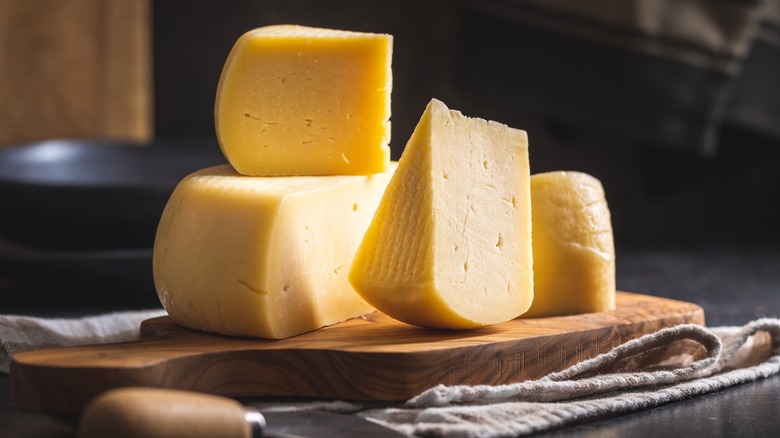Butter Is The Unexpected Key To Keeping Hard Cheese Totally Mold-Free
When you reach into the fridge for some cheese to grate for dinner, you might be disappointed to see some green, moldy spots covering the surface. While it is technically safe to cut off the mold on hard cheeses and eat the rest of it, it can be frustrating to have to lose a whole chunk of cheese. Fortunately, there is an easy way to protect your hard cheeses and prevent them from growing moldy before you have a chance to enjoy them.
If you want to add a protective layer to your cheese, the solution may just be in your fridge already. A coating of butter on the cheese's exterior can help lock moisture on the inside, keeping your hard cheeses tasting fresh. The added layer of protection will also prevent mold growth on the outside of the cheese, so you won't have to worry about slicing off moldy pieces and wasting any of your cheese.
A quick coat could prevent mold
For easy spreading, make sure your butter is at room temperature before you begin. This will make it easy to evenly coat the cheese. You'll then want to take a knife and carefully spread a layer of butter over the exterior of the cheese. Make sure every part of the cheese is covered to ensure it is fully protected.
Of course, you don't want butter to get all over your fridge once you place it back in your cheese drawer. You can wrap the butter-coated cheese in wax paper, or place it in an airtight container for some added protection. When it's time to use your cheese, the butter can be easily wiped away, leaving only the cheesy interior to slice up for your dishes. If you're only using a little bit of the cheese, you can slice off what you need. Then, grab some butter, and coat that exposed edge to ensure all-over protection.
Even cheesemakers use this trick
Though this trick may not be commonplace in many homes just yet, cheesemakers are familiar with it. When making cheese and preparing it to sell, cheesemakers will often coat their cheeses in a layer of fat — like lard or butter — before beginning the aging process. This trick will work best with hard or semi-hard cheese varieties, like parmesan or blocks of cheddar. The trick won't work as well with softer cheeses, like fresh mozzarella or feta.
The harder the cheese is, the easier it will be to remove the butter coating when it's time to cook, thanks to the stiff exterior. (Or, if you don't mind a little extra richness in your food, you can leave the butter on the cheese.) With softer cheeses, you may have a more difficult time separating the two, and it could impact the flavor of your dish. If you need a way to keep your harder cheeses fresh in the fridge before cooking with them, consider coating them with a layer of butter to prevent any mold growth on the outside.


